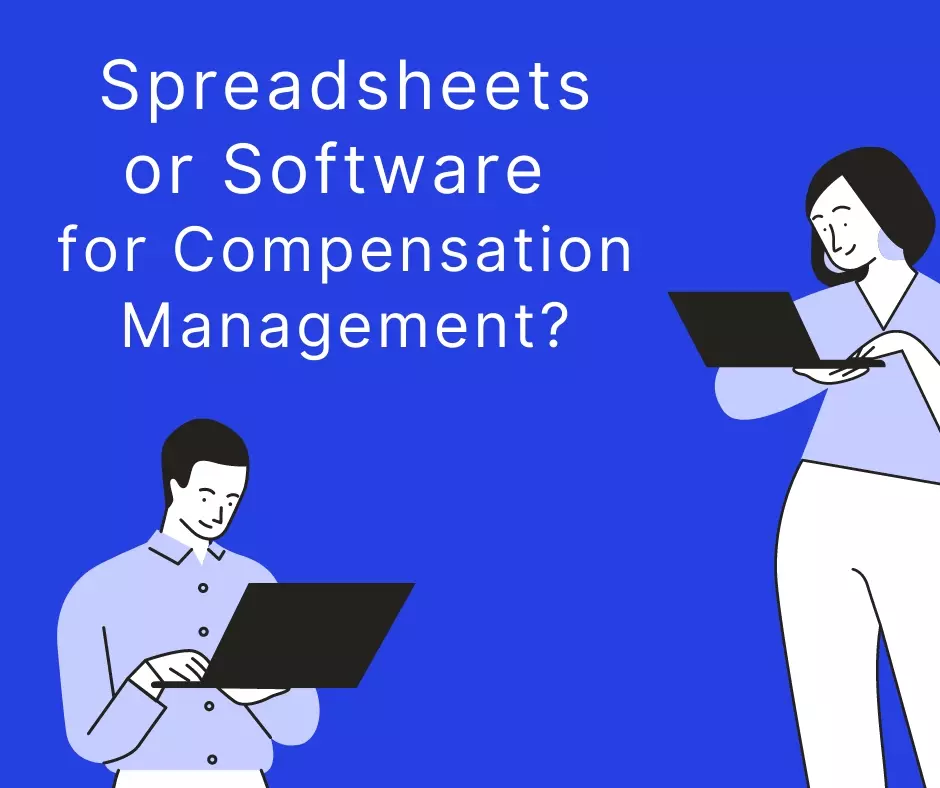For compensation planning and management, many employers are faced with choosing between using spreadsheets or software.
When using spreadsheets, employers ask if they should make the move to software and what factors should be considered. What is the best way to decide? There are different ways to compare the options. Employers usually focus on the inputs. It can be more important to consider the outcomes.

Current State
In evaluating whether to deploy software for compensation planning and management, HR and compensation professionals will examine the workflow and process they follow. And they will consider if technology can up their game by automating that process.
Typically, employers review the steps involved in the compensation planning process and weigh the benefits and disadvantages of off-line spreadsheets versus on-line software. Usually this leads to an analysis of time spent in executing their compensation plans. Such as how long does it take to:
- Create spreadsheets
- Email them to the right decision makers
- Consolidate the results from different managers
- Communicate the results to employees and leaders
- Prepare reports.
With software, there is generally a savings of time and effort in automating these steps.
Software Supersizes the Value of Compensation Plans
Let’s look beyond the traditional time savings of automating the process. Employers are well served to consider these three areas:
- Improvements to each employee’s understanding - and visibility - about compensation. One of the largest issues compensation and HR professionals hear from their internal managers is they don’t have enough visibility to compensation programs and the ingredients that go into making decisions. With software, employers are able to give managers the data they need. And it can be presented in a timely manner that is easily understandable.
- Outcome:
- Better decisions by managers
- More understanding of how compensation plans are executed
- Greater ability for managers to confidently communicate with their team members about their salaries and bonuses
- Outcome:
- Employee Motivation - software allows for compensation budgets to be distributed properly based on business rules and company priorities. Star performers can be rewarded in line with their contribution to business results and for achieving goals. This enhances the motivation of employees to continue to achieve more.
- Outcome:
- Enhanced employee engagement and satisfaction
- Improved employee retention
- Greater business results. People drive success of the organization in the form of higher revenue, profits, customer satisfaction and product innovation
- Outcome:
- Data Security - advanced software solutions have strong security and data privacy features. The risk of compensation information being mis-handled is mitigated with software.
- Outcome:
- Clear message to all team members that the organization is serious about treating sensitive compensation information in a secure way
- Minimized trouble from data being breached
- Confidence in maintaining privacy and tight controls
- Outcome:
Summary
We typically associate software with automating steps that have been done manually. Yes, there is value in looking at the value of technology in this way.
It turns out most of the value of software comes from the outcomes. These are benefits realized from having software in place. What’s more, those benefits multiply over time. A compounding effect of the value of technology is realized when we consider the outcomes.
By using technology for compensation planning and management employers can receive valuable outcomes.



